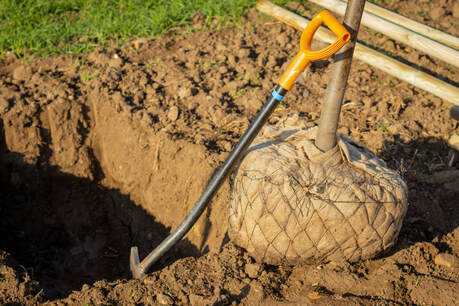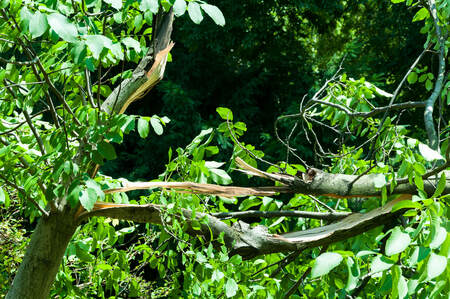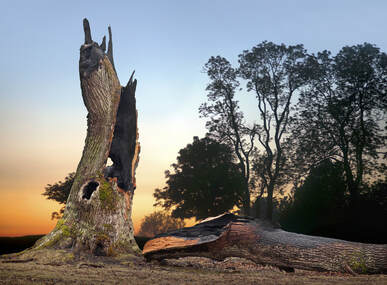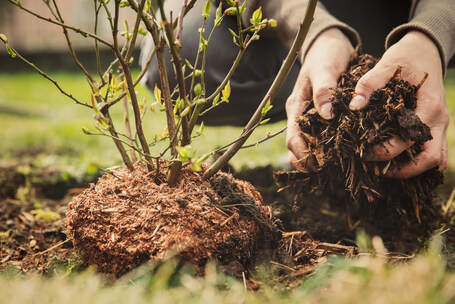 You adore your trees, but sometimes they’re better well-matched for other places. Maybe they’re no longer right for the spot in which they’re located. Or, perhaps you want to relocate, and you want to bring the treasured tree you climbed as a child with you. It doesn’t matter the tree you’re moving and the new spot to which you want to plant it. There are several rules to adhere to when moving an established tree to a new location. Transplanting Tree Conditions Ideal transplanting spots depend on the type and size of the tree you’re transporting — trees like various levels of sun and shade, as well as changing soil drainage conditions. The size and height of the tree and the location of power lines, underground utilities, and property foundations all affect the transplanting spot. There isn’t a vast difference between transplanting young trees vs. mature trees. The healthy growth rate and adaptable root ball of a young tree make its transplanting job very simple. Though, all trees have some degree of alarm after being transported. The amount of recovery time is contingent on the quality of aftercare. Mature trees take more energy to care for after being transplanted than younger trees. Some tree types respond better to transplanting than others. Elms, bald cypress, and red maples typically respond better to being uprooted than other types. To avoid needing tree removal and stump removal services due to inaccurate tree transplanting, do your homework and hire an arborist who is experienced in tree relocation. Most trees move well if accurate time is given to properly root prune, fertilize, and dig an appropriately sized root ball. Most importantly, the tree has to be watered correctly before and after transplanting. The only conditions to not relocate a tree:
Steps for a successful tree transplanting:
2/16/2019 How To Repair Trees That Have Been Burnt Tree hit lightning in a storm Tree hit lightning in a storm A fire on the west coast left many property owners with blackened and burned trees. As a homeowner, you will need to decide on your landscape the best method on how to repair trees that have been burnt. It is critical to think about the health of the trees and the degree of fire damage before you begin cutting. The best way to manage your property for restoring and helping your landscape back to its natural state differs vastly according to the damaged trees, green trees, and the places where the fire burned hot, killing all living organisms. First, decide the fire intensity that the ground got during the fire. Next, assess if your land burned so badly that the soil is sterile. In various fire intensity spots, the chances are good the earth is barren. What this indicates is that plants and grasses might not grow without adding mulch. You may want to use hydro mulching in some spots. Seeding late in autumn is typically not effective. It’s best to wait until the springtime for planting. Mulching should begin ASAP. If significant parts of the tree have been burned off or the tree is dangerously leaning, call a Rochester tree care company for tree and stump removal services. Sterile Ground & Burned Trees for Erosion Control With sterile ground and the probability of debris and flash floods flow, erosion control to revive your property and the burned area is imperative. Most professionals will use the burned trees that need to be cut down to lessen erosion. The dead trees on site are the most affordable method in reducing erosion. What to cut Form a plan that details how to use your dead trees to aid with erosion control and assist in putting nutrients back into the soil. Based on your stand density, you might need to eliminate some trees. You can leave some for habitation. The rest must be used for erosion control. Limbs could be scattered, chipped or lopped. What can be done for you and your property A Rochester arborist can assist you in coming up with a plan for your burned outdoor space that addresses every possible scenario and a solution. The primary goal is the recovery of your landscape.  For some folks, the title of this article may seem bizarre, but there are cases when a tree can stay intact and heal after being hit by lightning. Lightning storms happen all the time and trees are hit. Here is some information on what happens to the tree and the ways to maintain it after a lightning strike. My tree got hit by lightning, now what? When a tree is hit by lightning the fluids inside the trunk convert to gas immediately causing the bark to explode. Most trees hit by lightning die, the other half can live for many years, although often damaged and made vulnerable to diseases. With over 100 lightning strikes per second around the earth, trees are more susceptible than you think. Poplars and oaks tend to have a higher moisture content and be taller, increasing their chances of being hit by lightning. If a tree is hit after being soaked by rain, it has a better possibility of survival. Symptoms: The after effect when lightning hit a tree differs from tree to tree. Sometimes the tree splits upon impact. A strip of blown-away bark disfigures some trees. Others have no destruction at all and then die a few weeks later, most likely since the concealed damage was in the root zone. A tree struck by lightning has been cruelly stressed. To deal with this stress, the tree requires more nutrients. By providing more water to a lightning harmed tree, it will be able to absorb more nutrients. Stressed trees are also a good place for disease and insect issues. Utilizing fertilizer will aid in stimulating the growth of damaged trees. If the tree lives long enough to leaf out the next spring, chances for survival are excellent. Remove any broken limbs and splintered or torn wood from the damaged tree. If the tree falls, call an emergency tree care company for tree removal and stump removal services. Action: To stop lightning damage to treasured trees a lightning protection system must be installed. Copper cables are connected to the trees top limbs and then planted a safe distance from the tree. 2/2/2019 Can I Prune The Roots Of My Shrubs? What is root pruning? It is the process of trimming back long roots to incite a shrub to develop new roots closer to the trunk. Tree root pruning is a crucial step when you are transplanting an established shrub. Keep reading if you want to know more about root pruning. When you are transporting established shrubs, it’s best to move them from one location to another with as many roots as you can. The soil and roots that travel with the shrub create the root ball. Typically, a bush planted in the dirt will spread its roots wide and far. It would be impossible to try to have them all in the root ball. Arborists realize the more roots that a shrub has when it is moved, the better and faster it will adjust to its new spot. Can I prune the roots of my shrubs? Pruning shrub roots before planting reduces transplant alarm when the moving day arrives. Root pruning shrubs is a procedure meant to replace the long roots with roots nearer to the trunk that can be part of the root ball. Shrub root pruning involves cutting the roots at least six months before the move. Pruning roots before planting give new roots time to grow. The ideal time to trim roots of a shrub to be transported depends on if you’re moving it in fall or spring. Shrubs designated for a spring move must be root pruned in the fall. Those to be transplanted in fall must be pruned in the springtime. If you want to get a stump removed to get to the roots, call a stump removal company. Root pruning shrubs To start root pruning, make a circle in the soil around the bush to be moved. The circle size is parallel to the size of the shrub and also has to include the outer measurements of the root ball. The larger the shrub, the larger the circle. Trim the roots you see with a shovel edge or sharp spade. When you have dug deep enough to get the bulk of the roots, seal the trench back in with the removed soil. Restore it as it was, with the topsoil on top then the water well. |
AuthorWrite something about yourself. No need to be fancy, just an overview. Archives
December 2020
CategoriesAll Insects & Diseases Questions & Answers Tools & Safety Trees & Landscaping Tree Stump Basics |
- Home
- Services
- About
- Contact
-
Service Areas
- Rochester NY Stump Removal
- Brighton Stump Removal
- Chili Stump Removal
- Churchville Stump Removal
- East Stump Removal
- Fairport Stump Removal
- Farmington Stump Removal
- Gates Stump Removal
- Greece Stump Removal
- Henrietta Stump Removal
- Irondequoit Stump Removal
- North Gates Stump Removal
- Parma Stump Removal
- Penfield Stump Removal
- Perinton Stump Removal
- Pittsford Stump Removal
- Victor Stump Removal
- Webster Stump Removal
- Blog
- Home
- Services
- About
- Contact
-
Service Areas
- Rochester NY Stump Removal
- Brighton Stump Removal
- Chili Stump Removal
- Churchville Stump Removal
- East Stump Removal
- Fairport Stump Removal
- Farmington Stump Removal
- Gates Stump Removal
- Greece Stump Removal
- Henrietta Stump Removal
- Irondequoit Stump Removal
- North Gates Stump Removal
- Parma Stump Removal
- Penfield Stump Removal
- Perinton Stump Removal
- Pittsford Stump Removal
- Victor Stump Removal
- Webster Stump Removal
- Blog
Search by typing & pressing enter

 RSS Feed
RSS Feed